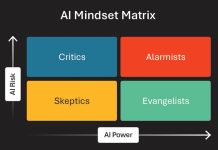Managers who create intricate business plans and put significant effort into developing short- and long-term goals for their teams and individual employees often revert to managing by time. The shift to working from home has forced many managers to adopt new approaches. It’s a change for the better, says Laura Vanderkam, a consultant on time management and productivity, and the author of “The New Corner Office: How the Most Successful People Work From Home.”
“Time is not the only marker of productivity. Managing with a focus on tasks and their accomplishment lets people capture the benefits of efficiency and lets them work how they work best,” she writes.
SMM: You recommend managing by task, not time. It seems to make perfect sense, whether in an office setting or the current WFH situation. Why isn’t this instinctual for managers no matter the office setting?
Vanderkam: Managing by time is relatively easy. Are people sitting in their desks from 9 a.m. to 5 p.m.? Do they look busy? They must be getting stuff done. Actually helping people set challenging but doable task lists for the week or the day is more complicated. But given that when people are working from home their managers can’t really see if they’re sitting in their desks, then it’s necessary to change the definition of an honest day’s labor. I’d argue that looking at results is ultimately much more efficient.
SMM: Companies are pondering whether WFH can work for them permanently – or at least some version of it. Have you heard any valid/legitimate reasons why desk-oriented work can’t be accomplished primarily from a home office?
Vanderkam: Not many good ones! There is certainly some work that must be done on-site (for instance, if there’s specialized equipment or security issues), but much information work can be done anywhere. I know that collaboration is somewhat more intuitive when you work face to face, which is why most places won’t go 100% virtual in the future. My guess is that organizations will come to a hybrid solution of two to three days per week in the office and two to three days per week at home (or one week a month in the office and three at home). In this schedule, collaborative work can be concentrated on the in-person days and focused, individual work on the work-from-home days. That’s the best of both worlds.
SMM: You are a proponent of planning in weeks rather than days, and only slightly ahead of time. (For example, planning the next week on a preceding Friday.) You feel it helps anyone take a broader look at what is consuming their time and structure each week for optimal use of that time. Do you propose coaching/managing to this tactic? While trying not to micromanage employees, can managers be actively involved in helping their team members plan in weeks – at least initially?
Vanderkam: I like to think of hands-on management as more “coaching” than micromanagement. Handled right, it’s empowering, rather than getting bogged down in details. Not everyone is a time management master, and so good managers can definitely help employees figure out what set of tasks would make for a challenging but doable week. Then you can break this down together into what can fit on any given day, and figure out a system for holding people accountable. Self-directed employees won’t need much supervision, but some people are a bit more hesitant and will need more help with planning. A good manager can see the difference and give each employee the help he/she needs.
SMM: What is your opinion of software that has workers record time spent on individual tasks? Is it helpful or hurtful in terms of time management?
Vanderkam: I track my time, and I can recommend that anyone else who wants to be efficient should track their time. We can learn all sorts of things when we see the data in black and white. However, I think this is best used as individual motivation – it helps me to see that I’m better able to focus in the morning, and I get more done if I take a real break in midday. I don’t recommend software that reports activities to managers as a form of tracking employees’ work. In general, this is kind of a lazy approach to management – trying to recreate the face-time culture of the office while people are working from home. If people know they’re being watched, they can game the system if they want. They can sign on early but look at time wasting apps on a phone rather than the laptop. They can keep their inbox open all day but do nothing in it. Or maybe they’re wasting tons of time in email but it looks “productive.” All of this tells you nothing. Better to work with employees to set goals they find engaging.
SMM: You speak to the concept of Zoom fatigue, which everyone can relate to. Too many meetings was a reality for many teams pre- and post-COVID. Does working virtually make it easier or harder to limit meetings to only the essential ones? What are you hearing anecdotally in terms of how companies are faring with this challenge?
Vanderkam: On some level, Zoom meetings are more efficient than in-person ones. No one needs to travel anywhere, which means you don’t lose time in transition. However, a lot of Zoom meetings have been scheduled to replace more informal conversations. You make a quick stop by a colleague’s desk to run something by him. When you can no longer do that, you schedule a formal 30-minute Zoom meeting, but it’s really only two minutes of material and the 30-minute meeting turns into schedule clutter. People are having to develop the skill of picking up the phone without a scheduled meeting when they need something quickly.
SMM: You state that virtual work presents an opportunity to innovate, not replicate. How so?
Vanderkam: When whole organizations went virtual overnight, people naturally tried to replicate the office environment. It makes sense, but long term, remote work gives us an opportunity to question many assumptions. Does everyone have to work the same hours? Do we need the same number of meetings? How do we decide when the day is done? Long term, there are many upsides to remote work, such as allowing people to work under the conditions that they work best. Wise organizations will take advantage of this flexibility rather than just replicating the offices they left behind.





